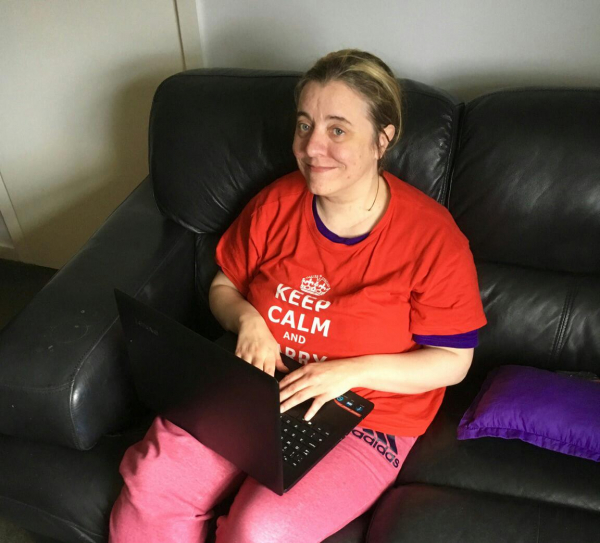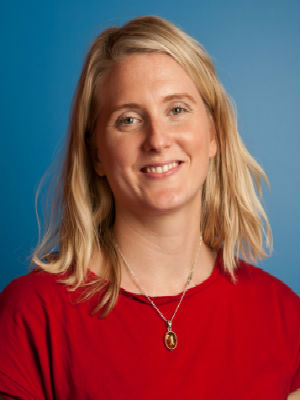Is it Time to Think of Autism as an Entity in its own Right?
Alan Somerville, Chief Executive Officer, Scottish Autism
Alan Somerville has been Chief Executive of Scottish Autism for nine years. In that time he has worked to modernise the organisation and has encouraged a culture of creativity and experimentation that has resulted in a wide range of organisational developments and improvements. Alan has also drawn on his business background to bring novel thinking to societal issues relating to autism. As his retirement date draws near, we have invited Alan to commit to record his perspective on how some of the persistent challenges we have faced at a service infrastructure level might be addressed.
John F Kennedy once said: “The great enemy of the truth is very often not the lie - deliberate, contrived and dishonest - but the myth - persistent, persuasive and unrealistic.” Autism is a phenomenon riddled with myths. These myths exist in the perception of the general public (many of whom still think of “Rainman”); in some parts of the health community who see it as mental illness; in local authorities, some of whom perceive it as purely a learning disability issue and others who see it inter alia as a behavioural issue (including criminality), as a consequence of a genetic difference, as a dietary phenomenon and many more. Just like everyone else the needs of an autistic person are dependent on the individual. In this article I will argue that autism’s unique characteristics make it an entity in its own right and one which can be particularly badly served by the existing processes and structures of the state.
Dr Glenys Jones and Professor Tommy Mackay of Birmingham and Strathclyde Universities respectively justify autism’s special identity as follows: “The justification for making a special case for autism is that it is in fact a special case. The autism spectrum represents the major part of the group of conditions classified as ‘pervasive developmental disorders’ (American Psychiatric Association, 1994; World Health Organization, 1992). It is the very nature of its pervasiveness that makes the autism spectrum different from other conditions, no matter how high their prevalence or how potentially debilitating their effects.” (i)
Autism occurs as the result of significant atypical features in the way people develop. The most noticeable differences are in the areas of social communication, social interaction, and social imagination, and sensory and cognitive processing. This however is only to scratch the surface.
Autism is a so-called “spectrum condition” – this term implying a number of linked conditions. It is a multidimensional phenomenon, with great complexity generated by the possible permutations of co-existing conditions. In fact, autism rarely occurs alone and it is more common for autism to be accompanied by other conditions. Indeed in some instances it will be addressing the co-existing conditions that provides the key to an improved quality of life for the individual concerned.
Professor Chris Gillberg of the University of Göteborg also attests that the co-existence of disorders “is the rule rather than the exception in child psychiatry and developmental medicine”. This leads him to conclude that children may need to see specialists in multiple disciplines to understand the complexity of their presentation.
“There is no time to wait; something needs to be done, and that something is unlikely to be just in the area of speech and language, just in the area of autism or just in special education.” (ii)
The concept of a single spectrum is outdated. Just as it takes a minimum of three dimensions to define a regular three dimensional object, multiple spectra would be required to reflect all the dimensions of such a complex phenomenon as autism.
The various spectra are unlikely to be continuous, with certain combinations of conditions existing in “clusters” irregularly along the length of any particular spectrum. It seems likely that some form of generally accepted conceptual “map” of autism and its co-existing conditions would be useful, defining a topology of “autism space.”
The autism spectrum gives rise to a range of personal and professional perspectives. It is therefore important to acknowledge that it can be a challenge to find a common language that reflects the understanding, values and principles of the various groups who are invested in advancing our understanding and support of people of all ages across very diverse spectra.
Many people in the social care community, understandably, find the idea of “classifying” people undesirable, but, it can be argued, this is also a barrier to understanding in terms of resourcing an autism strategy. This difficulty has led to a reluctance to take a “segmenting” or classifying approach to people’s autism for fear that someone might be wrongly labelled and provided with the wrong services. In other cases it might be a barrier to the receipt of any support at all. This is a misconception, although in line with Kennedy’s myths it is certainly persistent and persuasive. It is not intended that these segmentations are used to prescribe services for autistic people rather; they are a framework for the planning and resourcing of services.
Agreeing a standard segmentation of autism would be strategically useful but falls foul of the cherished theories of the plethora of practitioners who will only use a classification based on their own research, even when the differences between the rival systems are insignificant - a phenomenon recognised and labelled by Sigmund Freud as “the narcissism of small differences.”
While much progress can be made in setting out services for autistic people in this way, it cannot be “one size fits all.” The spectrum is wide, ranging from people who require care all their lives, to people who are of very high intelligence but might require support in social situations – e.g. for such activities as employment interviews. The saying “if you’ve met one person with autism, you’ve met one person with autism” is as true today as it ever was. In this complex environment it is more productive to address the specific requirements of the various spectra when planning services rather than treating the condition as a homogeneous whole.
The implication of this is that we must segment the autism spectrum in order to make sense of the services people require. Again I recognise that many people have deeply held misgivings about “labelling” people but reaffirm that service specification should always be uniquely personalised. This is a “mapping” for planning and understanding of different presentations of autism. It has no more direct implications for an individual than say the depiction of Australia in an atlas has on the actual shape of that continent.
Existing statistics on the autistic population are of limited value in isolation. They are often the result of studies commissioned by education, social care or health bodies and tend to record only the aspects of people’s autism which interfaces with that particular dimension. It seems quite possible that the majority of the adult autistic population does not present as a “problem” to any of the major organs of the state and therefore it is conceivable that a significant proportion of the total autism population does not appear anywhere in statistics gathered by any public agency.
It is equally likely that a significant number of people have been misdiagnosed and are receiving the wrong sort of support e.g. schizophrenia is often cited as a diagnosis which can wrongly be given to autistic people. In other cases individuals might be diagnosed with the dominant co-existing condition and their autism not mentioned.
Fairly sophisticated statistical analysis of available data would be required to identify these gaps and the inevitable double counting. This problem was addressed in the “Microsegmentation Project” funded by the Scottish Government and carried out by Professor Tommy MacKay of the University of Strathclyde and Professor Martin Knapp of the London School of Economics. The origins of the project lay with Scottish Autism and it became the grant holder. The authors propose a microsegmentation matrix that takes account of a range of variables such as intellectual ability as well as additional factors likely to impact on quality of life.(iii)
I now want to turn to the second theme of this essay, which concerns the way both practitioners and legislators address such a complex multidimensional phenomenon as autism.
Malcolm K. Sparrow is Professor of the Practice of Public Management at Harvard’s John F. Kennedy School of Government. His thinking set out in his book The Character of Harms: Operational Challenges in Control, Cambridge University Press, 2008 led to the Scottish Government and Scottish Autism jointly funding a workshop in Edinburgh in December 2012 – “The Scottish Strategy for Autism: Structuring Services and Harm Reduction Work for the ASD Community.”
Much of this theory is directed towards what Sparrow describes as “sabotaging harms.” The word “harm” may seem inappropriate in the context of autism, but the theory is readily adaptable to many complex issues facing government organisations. First, consider the levels at which “harms” could be addressed. Autism is a phenomenon rare enough to be considered optional (for which I am arguing change), but common enough to require organisational systems. Many agencies lack any apparatus for this and therefore assume that the issue is “covered” by existing functions and processes.
The result of this is that the majority of risk-control work is not organised around risk-concentrations (such as the unaddressed needs of people on the spectrum), but around functions, processes and agency structures.
This has several important implications. Imagine a concentration of risk/harms in the external world – in our case the entire needs of the autistic population. In response to this government creates a number of agencies to address this – most importantly health care, social services and education. The governing body now needs to decide what might be done, which Sparrow calls the theory of operations. Usually the general method of operations is set out in the governing/delivering body’s policies or authorising legislation – but not always.
Often the theory of operations represents an entrenched tradition which has never been questioned. This is perfectly normal and understandable – governments, local or national, need to plan for the delivery of services and are required to show fairness and objectivity as well as being efficient and providing value for money. This general theory is perfectly adequate for most of the population.
However the challenges and issues associated with autism exist in the outside world and are independent of the structures local and central government put in place to address them. The core of the problem is that with something as complex and multidimensional as autism for a significant minority of individuals there is a misalignment between the “standard” processes the state has in place and the nature of their needs.
In reality this works on two different scales:
- On the autistic population as a whole - recognising that autism is not a single specific issue but a series of “populations”; and
- On the autistic individual recognising the complexity inherent in co-existing conditions, sensory issues and the presentation of their autism.
Therefore our conceptual concentration of risks in the real world could represent either the issues facing the entire autistic population or multiple issues faced by an individual with ASD.
The layers of complexity created by the various segments of the autism spectrum combined with a variety of co-existing conditions causes autism to straddle multiple functions – particularly health and social care. Functional organisation is important but not sufficient because it leaves no-one in charge of processes which straddle multiple functions. This is not to imply that there is some form of conflict between processes owners (e.g. health and social care), just a lack of consideration of the individual’s interaction with the other process. The process owners may have markedly different views on how to proceed.
This can result in the individual being classified e.g. as a “patient” or as a “service user” according to where he/she comes to the attention of government services, and his/her other needs are not addressed.
The logical implication is that the issues are better focused on the individual than on the mainstream processes. Sparrow’s analysis concludes “that focusing on processes and focusing on problems produces two quite different patterns of thought and action.” (iv)
Addressing the various elements of a complex “harm” naturally produces a series of tailor-made interventions which are outside the normal policies and procedures of the state.
Conventional quality improvement policies in local government tend to focus on process improvement i.e. they are managerial tools for improving the agency’s processes. By contrast a problem-solving approach is an operational way of working on external “harms”.
The different segments and the different co-existing conditions (which are not the same thing) are what place autism into different service categories/ institutional structures. Any of these institutional structures alone is poorly adapted to catering for individuals who may present differently to education, mental health services, social care or even the criminal justice system. This point at first appears a little counter-intuitive: that although autism in its own right needs specialist attention and services, the co-existing conditions and needs that usually come with it do not make those specialist services exclusive providers, but they function in a constellation of different services meeting the needs of individuals.
This suggests additional resources specifically to manage all the various requirements of complex individuals. This may seem impracticable in the current economic climate but the escapable costs incurred through the failure to address the needs of such complex individuals are very large indeed. It is important that all the agencies of the state recognise that for such a multidimensional phenomenon as autism, staff in all disciplines must acknowledge that they may only be seeing one facet of the individual’s presentation and adopt an individual-focused approach (i.e. a problem-solving approach) if all the individual’s needs are to be met and quality of life maximised. In this context autism might well prove to be a useful test-bed for the integration of health and social care.
A vital first step towards this goal and the dispelling of the myths which surround autism is the recognition of autism as an entity in its own right, with as soon as possible a clearly defined and universally recognised topology of autism space.
REFERENCES
i SJones, G., & Mackay, T. (2013). Promoting the vision of the Scottish Strategy for Autism. Good Autism Practice Journal: The Scottish Perspective, 14 (1), 4.
ii Gillberg, C.(2010). The ESSENCE in child psychiatry: Early Symptomatic Syndromes Eliciting Neurodevelopmental Clinical Examinations. Research in developmental disabilities, 31(6),1543-51.
iii Mackay, T., Boyle, J., Connolly, M., Knapp, M., Immei, V., & Rehill, A. (2018). The Microsegmentation of the Autism Spectrum. Scottish Government. http://www.gov.scot/Publications/2018/03/3640
iv Sparrow, M. The Character of Harms: Operational Challenges in Control. Cambridge: Cambridge University Press, 2008.





